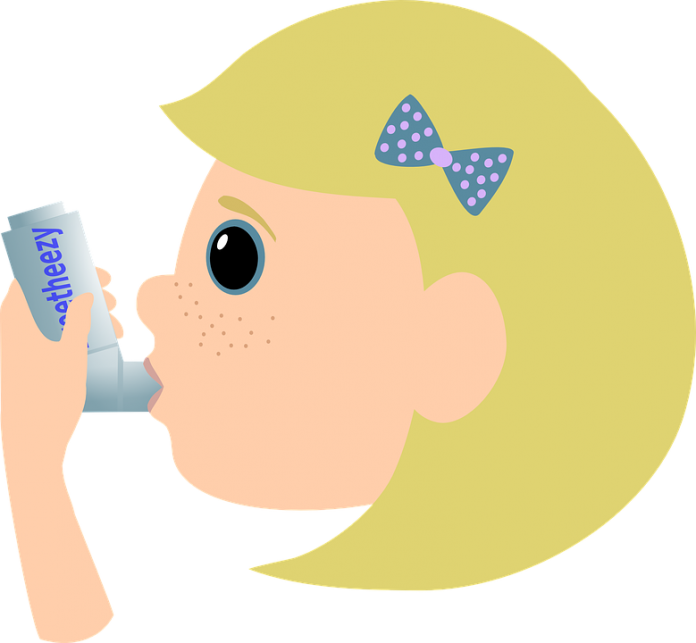In conjunction with the World Asthma Day on May 2, Philips is sharing knowledge on how asthma sufferers can reduce contact with asthma triggers. Asthma is a common and potentially serious chronic disease. It causes the narrowing and inflammation of the airways, making it hard for sufferers to breathe. Symptoms include wheezing, shortness of breath, chest tightness and a cough that can vary over time in occurrence, frequency and intensity.
What is asthma?
Asthma is a common and potentially serious chronic disease. It causes the narrowing and inflammation of the airways, making it hard for sufferers to breathe.
Symptoms include wheezing, shortness of breath, chest tightness and a cough that can vary over time in occurrence, frequency and intensity[1]. Recurrent asthma symptoms frequently cause sleeplessness, daytime fatigue, reduced activity levels and school and work absenteeism[2].
Fortunately, asthma can be effectively treated and most sufferers can achieve good control of their asthma. However, failure to recognize and avoid triggers that lead to asthma symptoms may result in an asthma attack, unplanned doctor/hospital visit and even death.
What is an asthma attack?
During an asthma attack, the lining of the bronchial tubes swell, causing the airways to narrow and reducing the flow of air into and out of the lungs².
How many people suffer from it?
- 20% of the world population suffers from allergic disease such as allergic asthma and allergic rhinitis[4]
- 300 million patients have asthma, and this is expected to increase to 400 million by 2025[5]
- In more than 50% of adults and 80% of children, their asthma is allergic4
- Asthma is the most common chronic disease among children[6]
- Patients with asthma reported 14.2 million visits to a doctor’s office and 1.3 million visits to hospital outpatient departments[7]
What can trigger the symptoms of asthma?
Although the fundamental causes of asthma are not completely understood, there are several, inhaled risk factors that can lead to the development of asthma² and may trigger its symptoms.
These include:
- PM 2.5 – These are microscopic air pollutants, with size below 2.5 micrometers, and long-term exposure to them can trigger pulmonary oxidative stress and inflammation. This damage is associated with the primary development of asthma and COPD. People with heart or lung disease (asthma and COPD) are under increased risk because these particles can aggravate the disease process.
- Bacteria and Viruses – Inhalation of viruses or bacteria can cause influenza, common cold, tuberculosis and other infections and increase the risk at asthma or COPD symptoms.
- Allergens –
Mold Spores: these can produce irritants and potentially toxic substances, which when inhaled by sensitive people, may trigger allergic reactions or asthma symptoms;
Pet dander: contain allergens that can cause allergic reactions or trigger asthmatic attacks; and
Dust mite: the waste they produce is a potent trigger for asthma - Dry Air – Around sixty percent of the human body is water[8]. Indoor, dry air draws water out of skin and hair cells, causing itchy skin, chapped lips, brittle hair and redeye. It can aggravate allergies, asthma and other respiratory conditions, and ruin a good night’s sleep.
What you can do if you suffer from asthma?
Medication
There are two types of asthma medication[9]:
- Long-term control medications are preventive, taken daily to achieve and maintain control of asthma symptoms.
- Quick-relief medications are used to treat asthma attacks. They relieve symptoms rapidly and are taken on an as-needed basis
Avoiding asthma triggers
Reducing contact with the triggers of asthma can help to reduce the severity of its symptoms. This can be done by:
- Keeping a diary of your symptoms. This will help you and your healthcare professional to get a clear idea of what may be triggering your asthma.
- Using an air purifier to reduce allergens and control their levels. Philips air purifiers all feature VitaShield IPS, which is proven to be effective against PM 2.5, bacteria, viruses and allergens, even removing particles as small as 20 nanometers.
- Managing your stress can help keep your asthma under control – find an approach that works for you, such as relaxation, exercise etc.
- If a beloved pet is part of your family, try to keep them out of your bedroom and off furniture. If possible, pets should be bathed frequently.
- Keeping the humidity in the air in your home between 30 and 50 percent can help asthma symptoms. Philips Humidifiers feature Philips NanoCloud, a unique humidification technology that maintains comfortable moisture levels in the home using a natural process that doesn’t use artificial additives.
- If you have any concerns about your asthma or the triggers that may affect it, speak to your healthcare professional.
[1] http://ginasthma.org/2017-pocket-guide-for-asthma-management-and-prevention/
[2] http://www.who.int/mediacentre/factsheets/fs307/en/
[4] http://apps.who.int/iris/bitstream/10665/68361/1/WHO_NMH_MNC_CRA_03.2.pdf
[5] https://waojournal.biomedcentral.com/articles/10.1186/1939-4551-7-12
[6] http://www.who.int/features/factfiles/asthma/asthma_facts/en/index6.html
[7] https://www.cdc.gov/nchs/fastats/asthma.htm
[8] https://www.britannica.com/science/human-body
[9] http://acaai.org/news/facts-statistics/asthma
Source: Philips
Read also: World Sleep Day 2016: Philips Promotes Quality Sleep Among Malaysians









